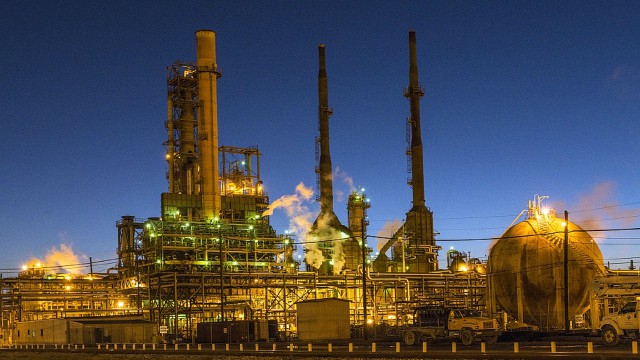Last week, there was a big OPEC meeting in Vienna where some of the largest oil producers in the world had agreed to increase production by one million barrels of per day. The move is a big adjustment in strategy from what the organization had agreed to for over the past year, which is to keep production low to ensure that oil prices rise.
The agreement has worked well, as oil prices recently reached four-year highs, and as a result the organization may feel justified in making these changes.
Cuts have been deeper than expected
Although it seems like OPEC may be doing a reversal in strategy, it’s simply trying to adjust for factors that have kept output levels even lower than expected. Venezuela, for instance, has had output problems related to economic issues that have plagued the country, and other nations have also pumped out less oil than what was originally planned.
OPEC said that in May, compliance with the planned cuts was 158%, well in excess of what was expected, and that the increases in production will simply help get that number a lot closer to 100%.
It may take time for these increases to have an impact on prices
Oil prices are affected by expectations, but also by hard, raw numbers. As we’ve seen so far, even though output restrictions may target one number, the reality could turn out very different. For a country like Venezuela, increasing output may be a lot more difficult than for others, and so there’s no guarantee that we’ll see output match the goals agreed to at this meeting either.
Saudi Arabia, meanwhile, has said that it is ready at a moment’s notice to increase production, with its energy minister Khalid al-Falih stating that, “Saudi Arabia is unique. All of our spare capacity is available at short notice.” However, he said the impact of the increase would not be felt until the end of summer, because crude would take weeks to reach markets.
That last line is what will be important to note here, as investors shouldn’t expect to see the impact of these changes just yet. Certainly, increases in production should have a downward impact on prices, but we may not see the full impact of that until months down the road.
What does this mean for oil and gas stocks?
Unfortunately, these changes could mean that we see more instability in the price of many big stocks. Enbridge Inc. (TSX:ENB)(NYSE:ENB), for instance, has seen its share price decline 20% in the past year, even though oil prices have been rising. Political factors in Canada have made investing in oil and gas a risky venture, and if oil prices start to decline again, that could only make things worse.
Cenovus Energy Inc. (TSX:CVE)(NYSE:CVE), however, has seen its stock rise around 40% during that time, although it’s coming off a downright dreadful year in 2017.
Whichever way you look at it, political conditions aren’t changing anytime soon in Canada, and dropping oil prices won’t help that. And for those reasons, investing in oil stocks right now could be risky. Investors may be better off looking at more stable stocks.






